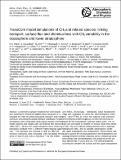| dc.contributor.author | Patra, P. K. | |
| dc.contributor.author | Houweling, S. | |
| dc.contributor.author | Krol, Maarten | |
| dc.contributor.author | Bousquet, P. | |
| dc.contributor.author | Belikov, Dmitry | |
| dc.contributor.author | Bergmann, D. | |
| dc.contributor.author | Bian, H. | |
| dc.contributor.author | Cameron-Smith, P. | |
| dc.contributor.author | Chipperfield, M. P. | |
| dc.contributor.author | Corbin, K. | |
| dc.contributor.author | Fortems-Cheiney, A. | |
| dc.contributor.author | Fraser, A. | |
| dc.contributor.author | Gloor, E. | |
| dc.contributor.author | Hess, P. | |
| dc.contributor.author | Ito, A. | |
| dc.contributor.author | Kawa, Stephan R. | |
| dc.contributor.author | Law, R. M. | |
| dc.contributor.author | Loh, Zoe | |
| dc.contributor.author | Maksyutov, Shamil | |
| dc.contributor.author | Meng, Lei | |
| dc.contributor.author | Palmer, Paul I. | |
| dc.contributor.author | Prinn, Ronald G. | |
| dc.contributor.author | Rigby, M. | |
| dc.contributor.author | Saito, R. | |
| dc.contributor.author | Wilson, C. | |
| dc.date.accessioned | 2012-05-22T21:09:07Z | |
| dc.date.available | 2012-05-22T21:09:07Z | |
| dc.date.issued | 2011-12 | |
| dc.date.submitted | 2011-12 | |
| dc.identifier.issn | 1680-7324 | |
| dc.identifier.issn | 1680-7316 | |
| dc.identifier.uri | http://hdl.handle.net/1721.1/70912 | |
| dc.description.abstract | A chemistry-transport model (CTM) intercomparison experiment (TransCom-CH₄) has been designed to investigate the roles of surface emissions, transport and chemical loss in simulating the global methane distribution. Model simulations were conducted using twelve models and four model variants and results were archived for the period of 1990–2007. All but one model transports were driven by reanalysis products from 3 different meteorological agencies. The transport and removal of CH₄ in six different emission scenarios were simulated, with net global emissions of 513 ± 9 and 514 ± 14 Tg CH₄ yr[superscript −1] for the 1990s and 2000s, respectively. Additionally, sulfur hexafluoride (SF₆) was simulated to check the interhemispheric transport, radon ([supercript 222]Rn) to check the subgrid scale transport, and methyl chloroform (CH₃CCl₃) to check the chemical removal by the tropospheric hydroxyl radical (OH). The results are compared to monthly or annual mean time series of CH₄, SF₆ and CH₃CCl₃ measurements from 8 selected background sites, and to satellite observations of CH₄ in the upper troposphere and stratosphere. Most models adequately capture the vertical gradients in the stratosphere, the average long-term trends, seasonal cycles, interannual variations (IAVs) and interhemispheric (IH) gradients at the surface sites for SF₆, CH₃CCl₃ and CH₄. The vertical gradients of all tracers between the surface and the upper troposphere are consistent within the models, revealing vertical transport differences between models. An average IH exchange time of 1.39 ± 0.18 yr is derived from SF₆ time series. Sensitivity simulations suggest that the estimated trends in exchange time, over the period of 1996–2007, are caused by a change of SF₆ emissions towards the tropics. Using six sets of emission scenarios, we show that the decadal average CH₄ growth rate likely reached equilibrium in the early 2000s due to the flattening of anthropogenic emission growth since the late 1990s. Up to 60% of the IAVs in the observed CH₄ concentrations can be explained by accounting for the IAVs in emissions, from biomass burning and wetlands, as well as meteorology in the forward models. The modeled CH₄ budget is shown to depend strongly on the troposphere-stratosphere exchange rate and thus on the model's vertical grid structure and circulation in the lower stratosphere. The 15-model median CH₄ and CH₃CCl₃ atmospheric lifetimes are estimated to be 9.99 ± 0.08 and 4.61 ± 0.13 yr, respectively, with little IAV due to transport and temperature. | en_US |
| dc.description.sponsorship | United States. National Aeronautics and Space Administration (NASA-AGAGE Grant NNX11AF17G) | en_US |
| dc.language.iso | en_US | |
| dc.publisher | Copernicus Publications on behalf of the European Geosciences Union | en_US |
| dc.relation.isversionof | http://dx.doi.org/10.5194/acp-11-12813-2011 | en_US |
| dc.rights | Creative Commons Attribution | en_US |
| dc.rights.uri | http://creativecommons.org/licenses/by/3.0/ | en_US |
| dc.source | Copernicus | en_US |
| dc.title | TransCom model simulations of CH₄ and related species: linking transport, surface flux and chemical loss with CH₄ variability in the troposphere and lower stratosphere | en_US |
| dc.type | Article | en_US |
| dc.identifier.citation | Patra, P. K. et al. “TransCom Model Simulations of CH₄ and Related Species: Linking Transport, Surface Flux and Chemical Loss with CH₄ Variability in the Troposphere and Lower Stratosphere.” Atmospheric Chemistry and Physics 11.24 (2011): 12813–12837. Web. | en_US |
| dc.contributor.department | Massachusetts Institute of Technology. Center for Global Change Science | en_US |
| dc.contributor.approver | Prinn, Ronald G. | |
| dc.contributor.mitauthor | Prinn, Ronald G. | |
| dc.contributor.mitauthor | Rigby, Matthew | |
| dc.relation.journal | Atmospheric Chemistry and Physics | en_US |
| dc.eprint.version | Final published version | en_US |
| dc.type.uri | http://purl.org/eprint/type/JournalArticle | en_US |
| eprint.status | http://purl.org/eprint/status/PeerReviewed | en_US |
| dspace.orderedauthors | Patra, P. K.; Houweling, S.; Krol, M.; Bousquet, P.; Belikov, D.; Bergmann, D.; Bian, H.; Cameron-Smith, P.; Chipperfield, M. P.; Corbin, K.; Fortems-Cheiney, A.; Fraser, A.; Gloor, E.; Hess, P.; Ito, A.; Kawa, S. R.; Law, R. M.; Loh, Z.; Maksyutov, S.; Meng, L.; Palmer, P. I.; Prinn, R. G.; Rigby, M.; Saito, R.; Wilson, C. | en |
| dc.identifier.orcid | https://orcid.org/0000-0001-5925-3801 | |
| dspace.mitauthor.error | true | |
| mit.license | PUBLISHER_CC | en_US |
| mit.metadata.status | Complete | |
